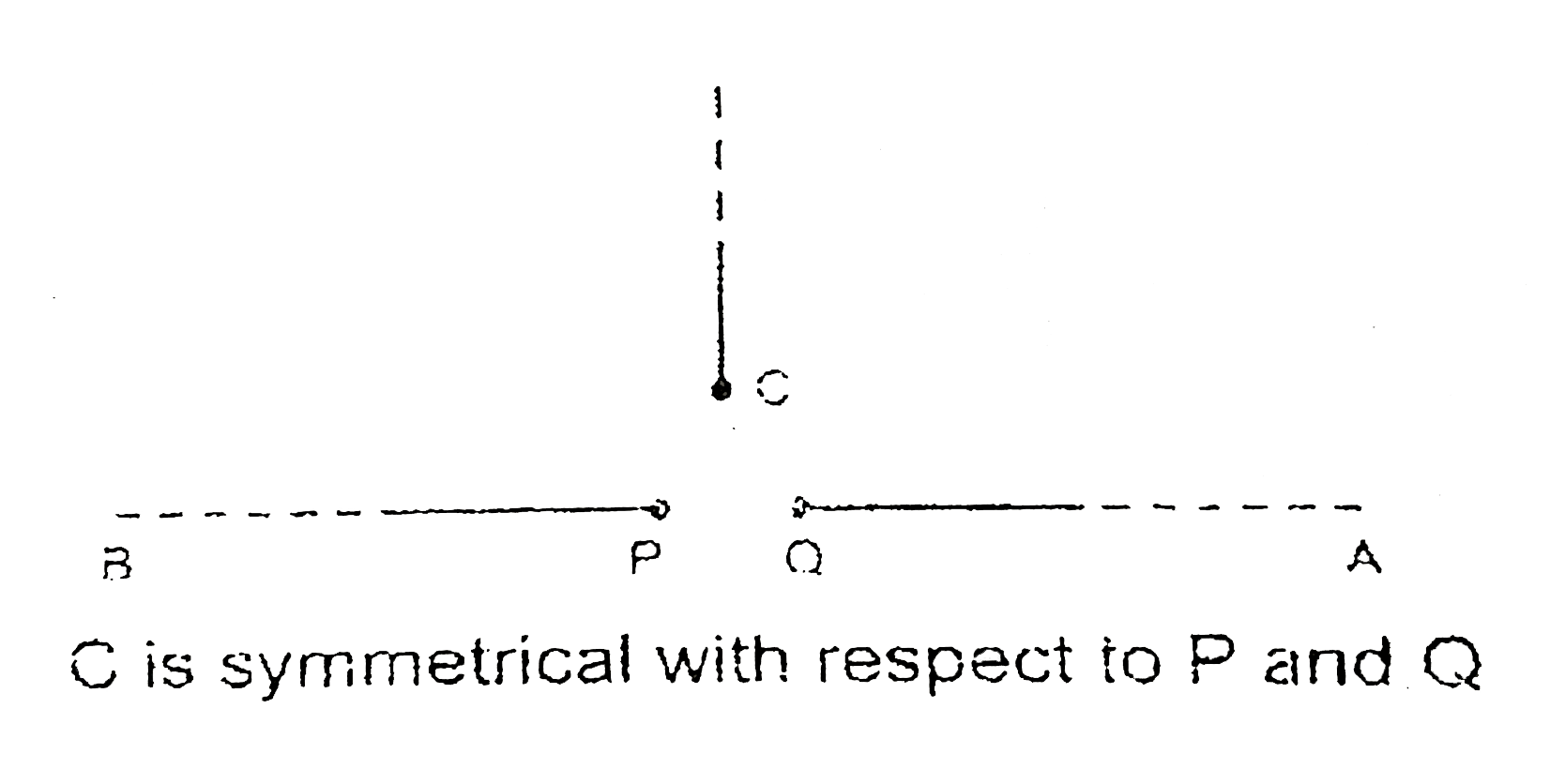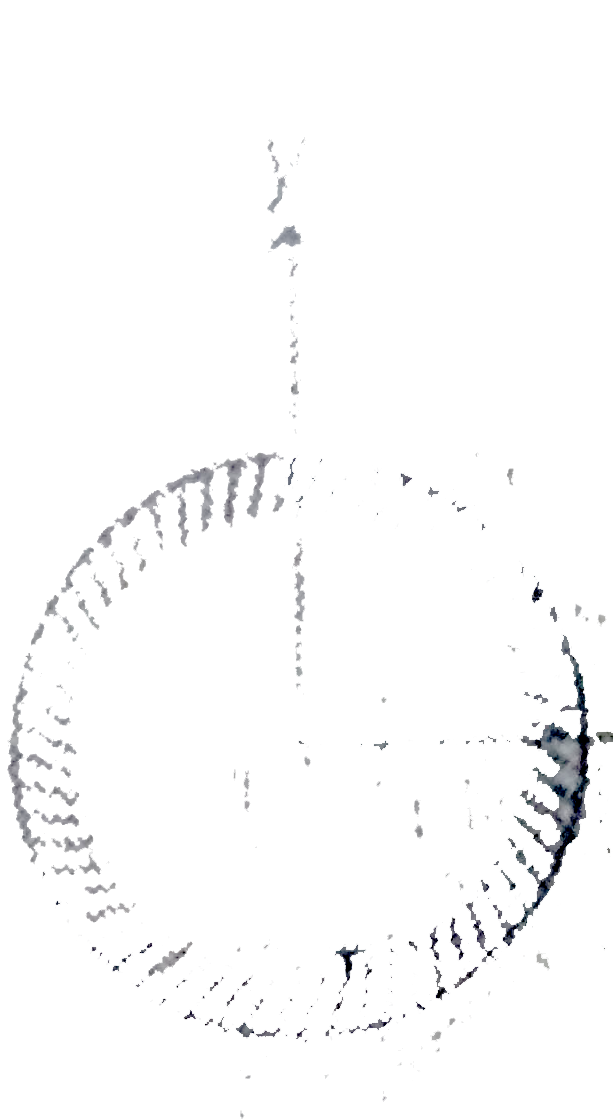There is a source emitting electromagnetic waves of wavelength 2m . One light ray reaches a point P in space direcly and the other ray reaches the same point P after travelling 1m extra distance and after getting reflected from a glass plate. Let I be the original intensity corresponding to both rays and glass plate reflects only 25% of incident energy. Resultant intensity at point P will be
3I/2
9I/2
9I/4
0
The correct Answer is:C
Let I1andI2 be the intensities corresponding to both rays, then we can write the following:
I1=I
I2=I/4, because 25% energy is refleced.
Path difference introduced is Δx=1m and thus correseponding phase difference can be written as
δ.=(2π/λ)Δx=(2π/2)(1)=π
There is an additional phase difference of π due to reflection and hence net phase difference between the two rays becomes zero.
δ=0
Resulant intensity can be written as follows:
I=I1+I2+2√I1I2cosδ
⇒Inet=I+I4+2√I×I4cos0=9I4
Topper's Solved these Questions
- WAVE OPTICALBook:MODERN PUBLICATIONChapter:WAVE OPTICALExercise:OBJECTIVE TYPE QUESTIONS (B. MULTIPLE CHOICE QUESTIONS) -AIPMT/NEET & OTHER STATE BOARDS FOR MEDICAL ENTRANCE
Explore 10 Videos
- WAVE OPTICALBook:MODERN PUBLICATIONChapter:WAVE OPTICALExercise:OBJECTIVE TYPE QUESTIONS (JEE (MAIN) & OTHER STATE BOARDS FOR ENGINEERING ENTRANCE)
Explore 22 Videos
- WAVE OPTICALBook:MODERN PUBLICATIONChapter:WAVE OPTICALExercise:Revision Exercises (Numerical Problems)
Explore 31 Videos
- SEMICONDUCTOR ELECTRONICS METERIALS DEVICES AND SIMPLE CIRCUITS Book:MODERN PUBLICATIONChapter:SEMICONDUCTOR ELECTRONICS METERIALS DEVICES AND SIMPLE CIRCUITS Exercise:CHAPTER PRACTICE TEST FOR BOARD EXAMINATION
Explore 12 Videos
Similar Questions
A light ray emerging from the point source placed at P(1,3) is reflected at a point Q in the axis of x. If the reflected ray passes through the point R(6,7), then the abscissa of Q is:
View SolutionA ray emanating from the point (5,0) and is incident on the hyperbola 9x2−16y2=144 at the point P with abscissa 8. Then the equation of reflected ray after first refection, where the point P lies in first quadrant
View Solution
Knowledge Check
A source emits electromagnetic waves of wavelength 3m. One beam reaches the observer directly and other after reflection from a watersurface, travelling 1.5m extra distance and with intensity reduced to 1/4 as compared to intensity due to the direct beam alone. The resultant intensity will be :
A(1/4)radB(3/4)radC(5/4)radD(9/4)radTwo monochromatic sources of electomagnetic wave, P and Q emit waves of wavelength λ=20m and separted by 5m as shown. A,B and C are three points where interference of these waves is observed. If phase of a wave generated by P is ahead of wave generated by Q by π/2 then (given intensity of both waves is l) :
 Aphase difference of these waves at B is 180∘Bintensitiesat A,B and C are in the ratio 2:0:1 respectivelyCintensitiesat A,B and C are in the ratio 1:2:0 respectivelyDphase difference at A is 00.
Aphase difference of these waves at B is 180∘Bintensitiesat A,B and C are in the ratio 2:0:1 respectivelyCintensitiesat A,B and C are in the ratio 1:2:0 respectivelyDphase difference at A is 00.A point source emits sound equally in all directions in a non-absorbing medium. Two point P and Q are at distance of 2m and 3m respectively from the source. The ratio of the intensities of the wave at P and Q is :
A9:4B2:3C3:2D4:9
Incident ray from focus S after reflection by ellipse at point P passes through the other focus S'.
View SolutionA ray emanating from the point (0,6) is incident on the ellipse 25x2+16y2=1600 at the point P with ordinate S. After reflection, ray cuts the Y-axis at B. The length of PB is
View SolutionA point source emits sound equally in all directions in a non-absorbing medium. Two point P and Q are at distance of 2m and 3m respectively from the source. The ratio of the intensities of the wave at P and Q is :
View SolutionThere is an equilateral triangle ABC. Two monochromatic and coherent sources of light are placed at points A and B. Intensity of light from both the sources reaching the point C is same and equal to 2W/m2. Resultant intensity of light at point C
View SolutionA refracting surface is represented by the equation x2+y2=a2. A ray travelling in negative x-directed towards positive y-direction after reflection from the surface at point P. Then co-ordinates of point P are

View Solution

